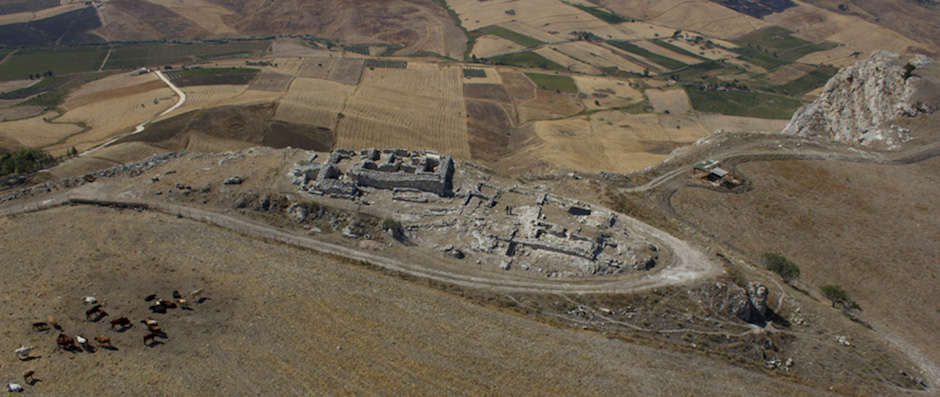
At Rocca d’Entella, the site of ancient Entella, known mainly for the decrees issued by the boule and inscribed on bronze tablets, the Scuola Normale carried out archaeological investigations in the town, in the necropolis and in the territory, bringing this urban and territorial context – rich in information on the history and archaeology of inland western Sicily – to the attention of scholars.
The full publication of the three complexes investigated in a more extensive and continuous manner is currently in progress: the central area of the ancient city, in the eastern valley, with the late archaic oikos and the public storehouses from the Hellenistic period, the medieval fortified palace, and the maqabir (burial areas of Islamic rite) located in various parts of the Rocca.
In accordance with the SAET’s project, archaeological investigations have been resumed (since 2020) in the two most significant contexts of the urban area: the monumental complex in the eastern valley and the ancient buildings pre-dating the medieval palace in the southern sector.
Regarding the first of the two sectors, Demeter and Kore are increasingly tangible presences in the urban sanctuary of the eastern basin, articulated on four terraces. The complex recalls architectural forms and preparations for open-air rituals typical of Chthonian cult contexts. From the oikos temple on the second terrace, the Thesmophoric fertility festivals for women and the earth moved to the lower terrace of the complex, where various votive deposits of ceramics, used between the 4th and 3rd centuries BC in sacrifices and for ritual meals, are collected in ditches inside and outside an enclosure. Among the cultic devices, there is also evidence of a circular pool (megaron) in which, during a phase of rites for Demeter (megarizein), piglets were laid, the decomposed remains of which, mixed with cereals, constituted the main offering to the goddess.
The sacred also emerges from the Hellenistic buildings brought to light in the other investigated sector, the area of the medieval fortified palace, which has already been entirely unearthed in previous excavations and is now being edited. Here, a monumental complex is coming to light, on two levels: the upper level is still covered by medieval buildings, while the lower level is divided into a series of rooms located along a large terracing wall and open towards the valley.
In the southern room, several ditches with votive materials (including a figurine of Athena) were brought to light: they are results of rituals that took place in Entella between the 4th and 3rd centuries BC on the occasion of recurring festivals, or expressions of devotion by individuals or family groups.
If Demeter and Kore are clearly identifiable in the monumental complex of the eastern valley, the deity(ies) of the summit area of the Rocca di Entella will be better defined by an overall reading of architectural forms, cultic arrangements and the regime of offerings.
Scientific coordinators: Anna Magnetto, Carmine Ampolo, Maria Cecilia Parra
Contributors: Agata Abate, Oriana Silia Cannistraci, Cesare Cassanelli, Alessandro Corretti, Donatella Erdas, Antonino Facella, Vanessa Gagliardi, Nicola Giaccone, Maria Ida Gulletta, Pietro Manti, Chiara Michelini, Riccardo Olivito, Marianna Perna, Emilio Rosamilia, Azzurra Scarci, Alfonsa Serra, Emanuele Taccola, Maria Adelaide Vaggioli
Data acquisition C. Cassanelli, A. Corretti, A. Palla
Processing Emanuele Taccola


